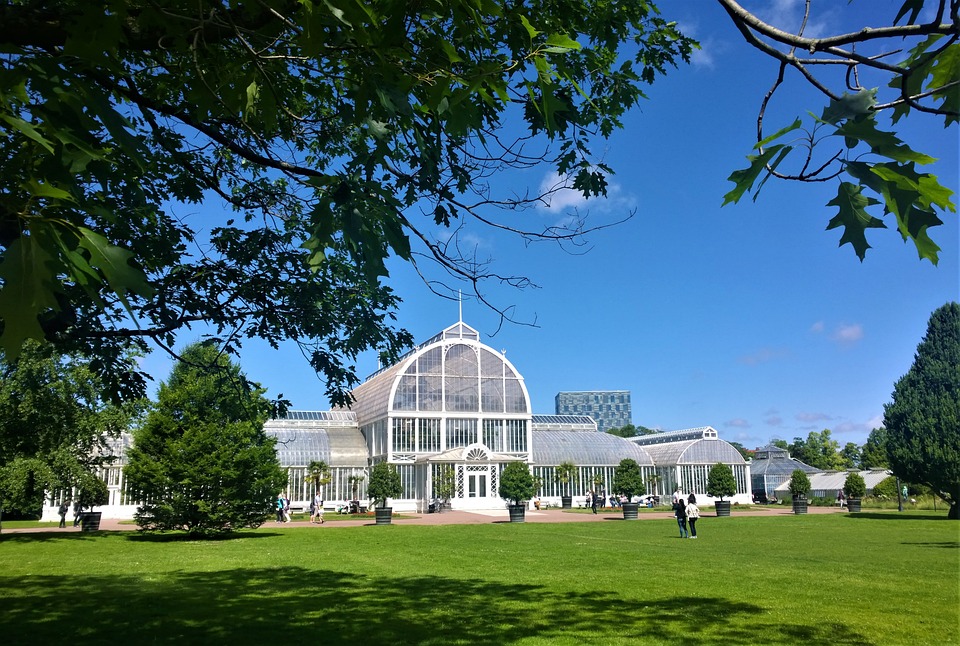Introduction
Growing lush greenhouse plants can be a rewarding and fulfilling hobby. The controlled environment of a greenhouse allows you to cultivate a wide variety of plants, regardless of the weather outside.
However, achieving optimal growth and maintaining healthy plants in a greenhouse requires knowledge and expertise. In this article, we will discuss expert tips and techniques to help you master the art of growing lush greenhouse plants.
Choosing the Right Greenhouse
The first step in successfully growing greenhouse plants is selecting the right greenhouse structure. Consider factors such as size, material, ventilation, and insulation.
Size is important to ensure you have enough space for your plants, while material and insulation impact temperature control. Proper ventilation is crucial for maintaining the right balance of moisture and air circulation.
Providing Optimal Lighting
Proper lighting is essential for the growth of greenhouse plants. Most plants require a minimum of 6 hours of direct sunlight per day. If your greenhouse does not receive enough natural light, consider artificial lighting options such as fluorescent or LED grow lights.
Position the lights at the right distance from the plants to ensure they receive adequate light intensity.
Controlling Temperature and Humidity
Temperature and humidity control is vital for greenhouse plant health. Invest in a quality thermostat and hygrometer to monitor and maintain appropriate levels. Different plants have different temperature and humidity preferences, so be sure to research the specific requirements of the plants you are growing.
Proper ventilation, shading, and misting systems can also help regulate the temperature and humidity within the greenhouse.
Choosing the Ideal Growing Medium
The choice of growing medium greatly affects the growth and health of your plants. Common options include peat, compost, coco coir, perlite, and vermiculite. Consider the specific needs of your plants – some may require a well-draining medium, while others prefer a moisture-retaining one.
Regularly check the pH levels of the growing medium to ensure they are suitable for your plants.
Implementing Proper Watering Techniques
Watering greenhouse plants correctly is crucial to avoid overwatering or underwatering. Make sure to water plants at their base to prevent wetting the foliage, which can promote fungal diseases. Monitor the moisture levels in the growing medium and water accordingly.
A drip irrigation system or a watering wand with adjustable flow settings can help deliver water precisely where it is needed.
Monitoring and Preventing Pests and Diseases
Pests and diseases can quickly spread in a greenhouse environment. Regularly inspect your plants for signs of infestation or disease, such as yellowing leaves, webbing, or spots. Implement integrated pest management strategies, such as using biological controls or organic insecticides.
Maintain good hygiene practices, such as cleaning tools and equipment regularly, to prevent the spread of pests and diseases.
Proper Pruning and Training Techniques
Pruning and training techniques are essential for maintaining healthy and well-shaped plants. Regularly inspect your plants and remove dead or damaged foliage. Prune for air circulation and to encourage branching and denser growth.
Consider using stakes or trellises to support vining plants and ensure they grow in the desired direction.
FAQs
Q: How often should I fertilize my greenhouse plants?
A: The frequency of fertilization depends on the type of plants and the specific fertilizer you are using. Generally, it is recommended to fertilize greenhouse plants every 2-4 weeks during the active growing season. However, always refer to the instructions provided with your chosen fertilizer and adjust accordingly.
Q: Should I use pesticides in my greenhouse?
A: It is advisable to try non-chemical pest control methods first, such as introducing beneficial insects or using insecticidal soaps. However, if the infestation persists and poses a significant threat, you may need to resort to pesticide application. Always follow the instructions and guidelines provided by the pesticide manufacturer and consider using organic or biopesticides when possible.
Q: Can I grow vegetables in a greenhouse?
A: Absolutely! Greenhouses provide an ideal environment for growing a wide variety of vegetables. Many cool-season vegetables, such as lettuce, spinach, and kale, thrive in greenhouse conditions. However, it’s important to research the specific requirements of each vegetable and provide appropriate temperature, light, and watering conditions.
Q: How can I prevent fungal diseases in my greenhouse?
A: To prevent fungal diseases, ensure proper air circulation within the greenhouse by using fans or vents. Avoid overwatering and wetting the foliage excessively. Remove and discard any infected plant material immediately to prevent the spread of spores.
Consider using organic fungicides or biological controls as a preventative measure.
Q: How do I maintain the cleanliness of my greenhouse?
A: Regularly clean any debris or fallen leaves from the greenhouse to prevent pests and diseases. Disinfect tools, trays, and pots before reusing them. Wipe down surfaces and disinfect them with a mild bleach solution.
Maintaining good hygiene practices is key to preventing the buildup of harmful pathogens.




